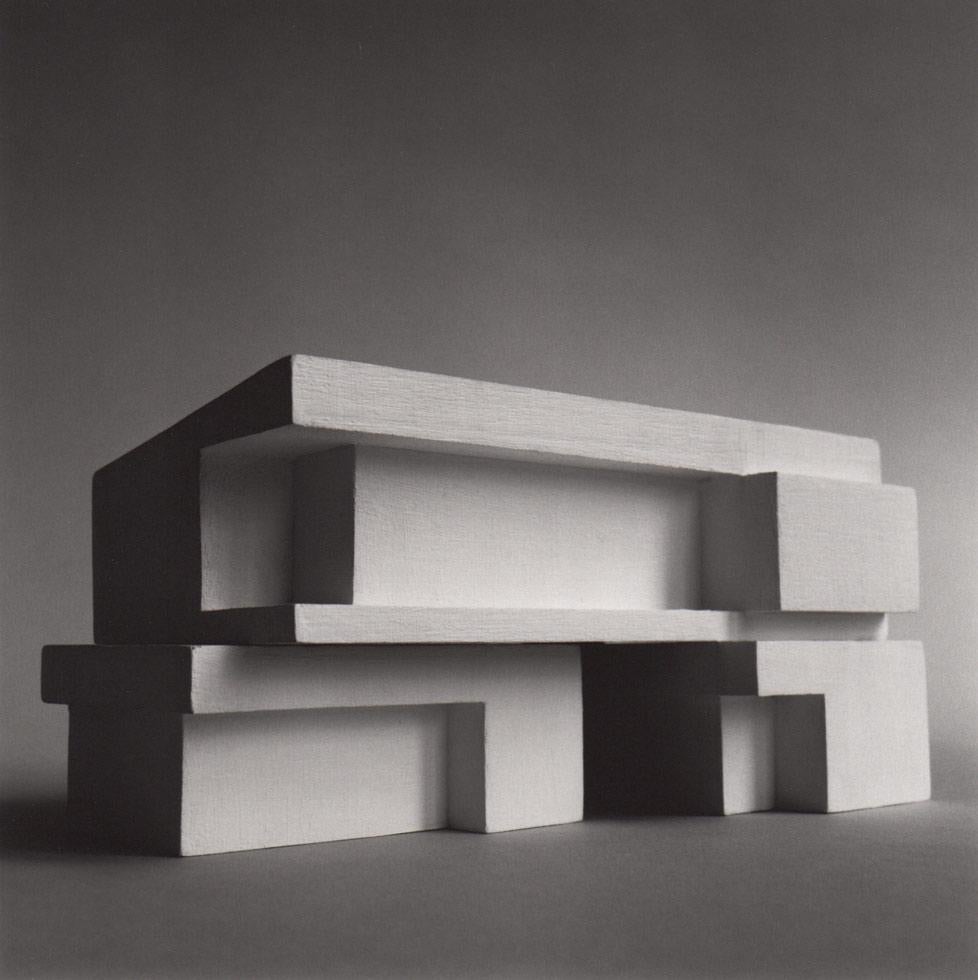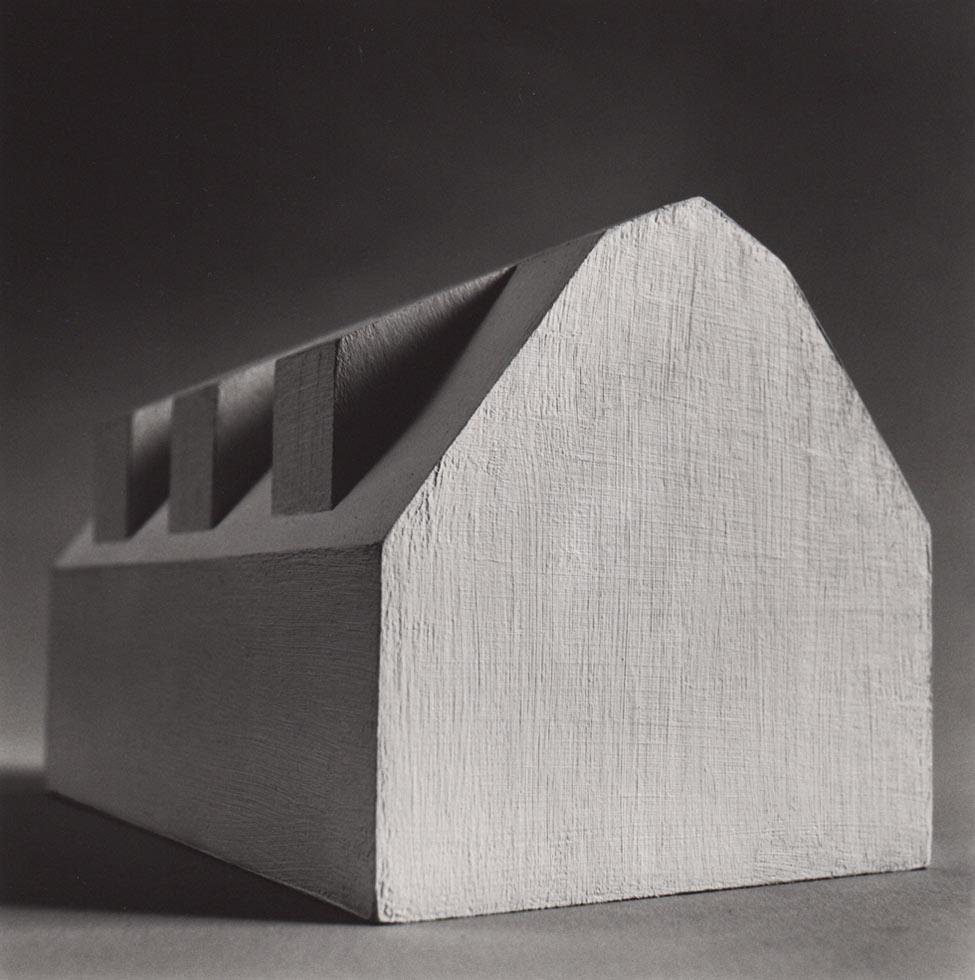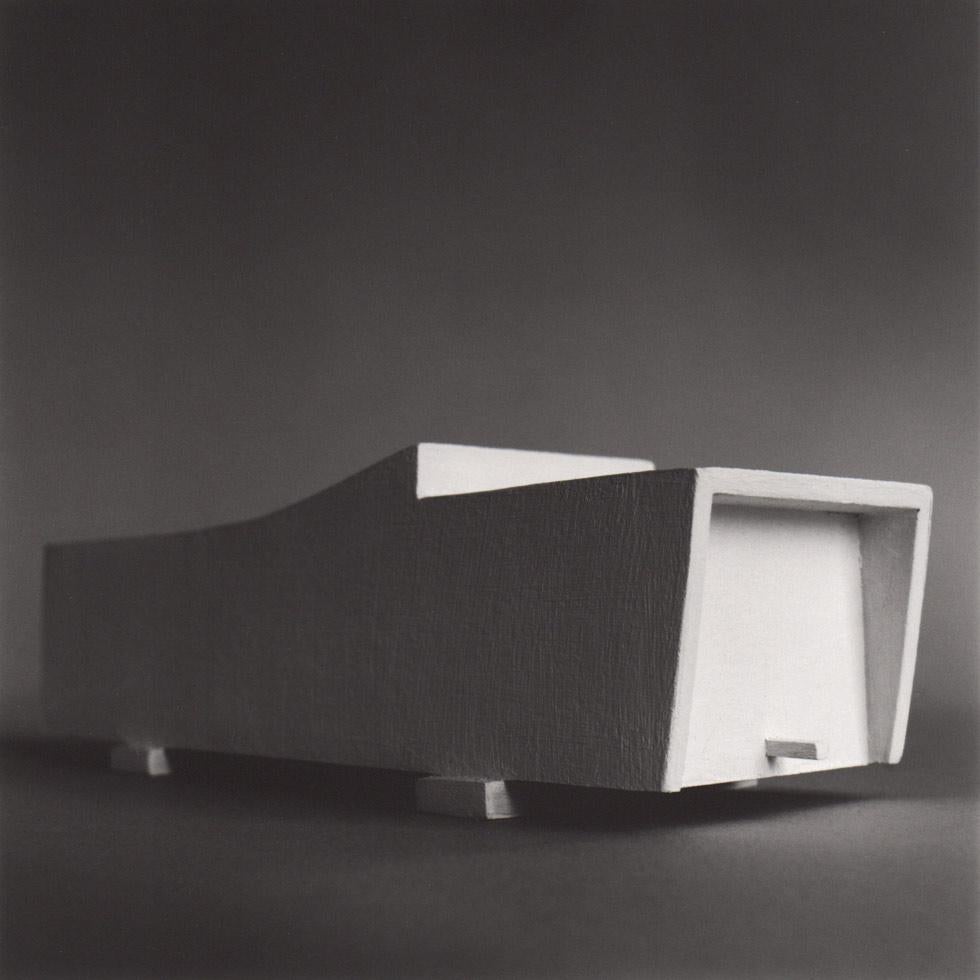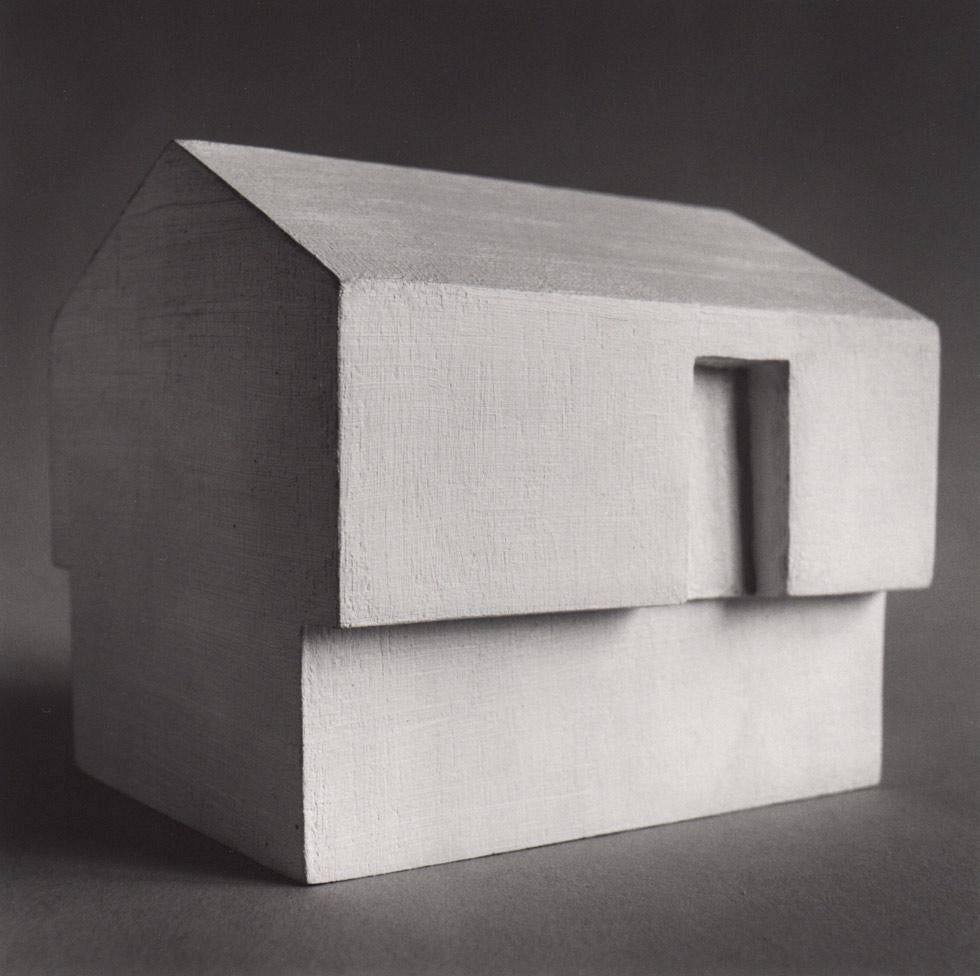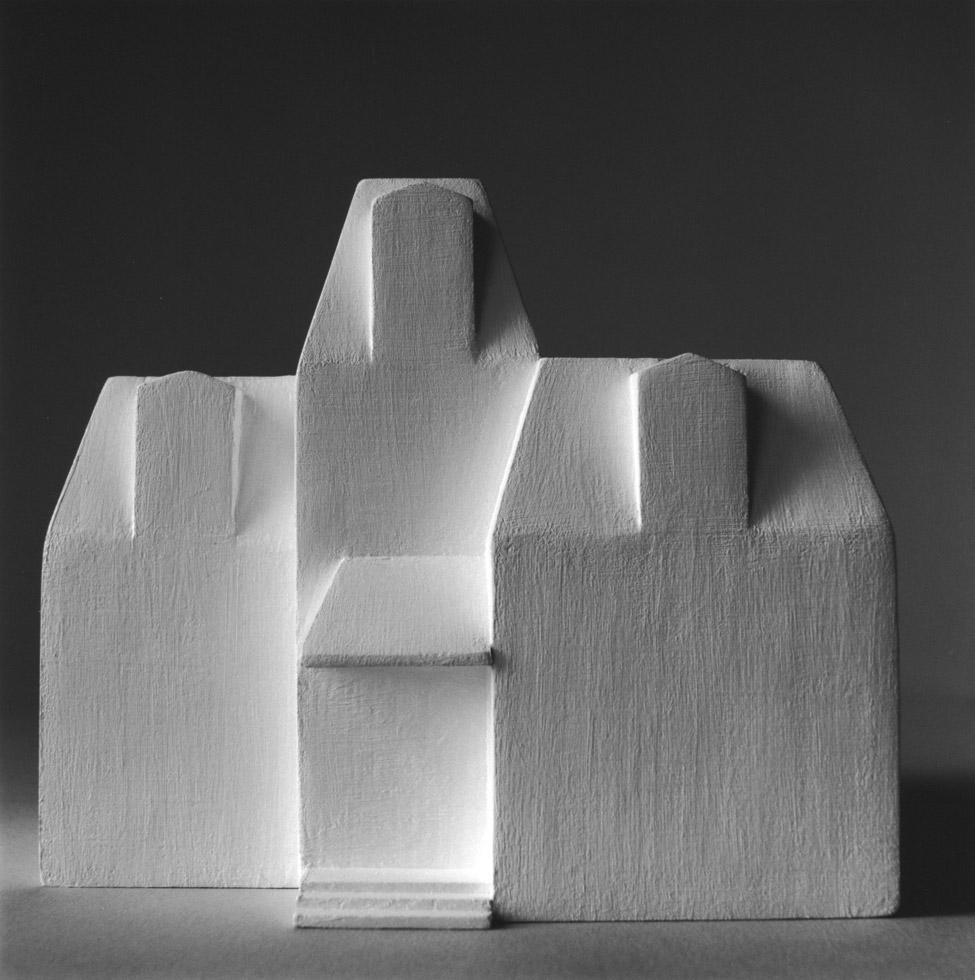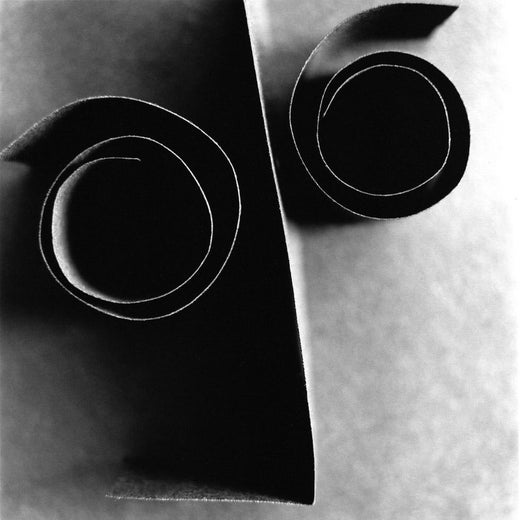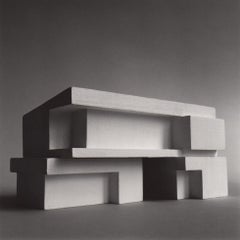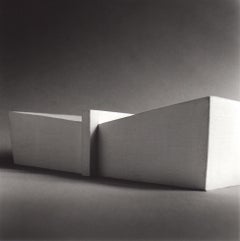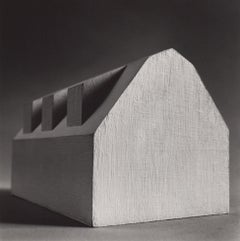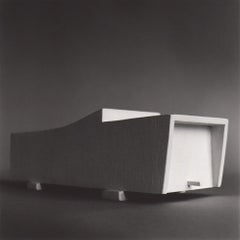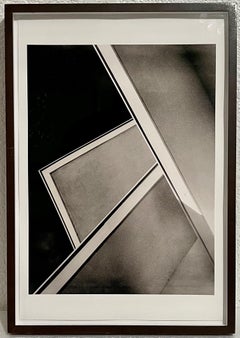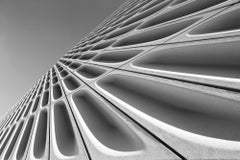Items Similar to Contemporary Shed Modern
Want more images or videos?
Request additional images or videos from the seller
1 of 5
Ion ZupcuContemporary Shed Modern2012
2012
$1,800
£1,374.29
€1,587.98
CA$2,526.86
A$2,816.45
CHF 1,477.69
MX$34,393.42
NOK 18,710.81
SEK 17,684.56
DKK 11,851.80
About the Item
Toned gelatin silver print
Signed and numbered in pencil, verso
15 x 15 inches
(Edition of 10)
30 x 30 inches
(Edition of 3)
From the series, "American Homes"
This artwork is offered by ClampArt, located in New York City.
Please note that prices increase as editions sell.
Ion Zupcu writes: “The houses showcased in this series illustrate the spirit and evolution of common houses found throughout North American neighborhoods from the past four centuries. They represent a range of homes from Folk Houses to McMansions. The development of these styles is a reflection of our ever-changing taste and sensibility.
"The photographs in ‘American Homes’ are the result of my passion and investigation for architecture, structure, and light. My experience with three-dimensional forms has created a fluid transition into a deeper understanding of the history and design of American homes.
"Through a collaborative process, architectural models were carefully selected, designed, and constructed for these photographs with architect Tagore Hernandez. During the iterative processing beginning with detailed models, I became aware that what captivated me the most about domestic homes was their outline and form. Initial detail models were stripped down, recreated, and presented in a way that allowed their sculptural forms to emerge.
"All the houses are put on the stage before the public. These houses are not landmarks, they are icons of the places in which we sleep, eat, and raise our families. I have lived with my wife and daughter in a Shed Modern home for the past seven years in Upstate New York.”
Ion Zupcu first explored his interest in photography by working in a studio in Romania when he was a young man. A few years later, after getting married and having his first child, Zupcu found himself spending long hours caring for his daughter. With a desire to continue pursuing his interest in photography, he began shooting still-life compositions at home with vases and flowers. It was during this time that he also began researching the work of early 20th-century Modernist photographers in depth, which ultimately influenced his aesthetic a great deal.
In 1991 Zupcu moved to New York City to start a new life for himself. His first job was driving a yellow taxi, and it was one his customers, an owner of a black-and-white printing lab, that got him back into the world of photography. Zupcu was hired by the lab owner and quickly learned the tools of traditional darkroom printing. However, it was not until 1993, when he first visited the International Center for Photography in Manhattan and later discovered three Ansel Adams books (The Camera, The Negative, and The Print), that he seriously devoted himself to producing new work.
It took seven long years for Zupcu to be reunited with his wife and daughter when, in 1998, they finally were permitted to enter the United States to live in New York City. Their arrival awakened in the artist a fresh sense of purpose and new-found motivation. Up to that point he had been producing primarily landscape photography. However, he now went back to his initial interest in still-life work, and began spending long hours shooting, studying, and mastering the subject matter. His first fully-realized series of photographs in this genre was in 1999 with a group of images simply titled, Flowers. Several other bodies of work soon followed, including photographs depicting bottles, fabric, and eggs, among other objects. To this day Zupcu insists on printing and toning all of his work himself.
Since his first solo exhibition in 2000, Zupcu’s photographs have become part of numerous private collections throughout the world, and his work is already represented in such prestigious public collections as the Museum of Fine Arts, Houston; the Detroit Institute of Art, Michigan; and the University of Michigan Museum of Art, Ann Arbor; among others.
- Creator:Ion Zupcu (1960, Romanian)
- Creation Year:2012
- Dimensions:Height: 15 in (38.1 cm)Width: 15 in (38.1 cm)
- Medium:
- Movement & Style:
- Period:
- Condition:
- Gallery Location:New York, NY
- Reference Number:1stDibs: LU93233294713
Ion Zupcu
Ion Zupcu was born in Romania in 1960 and studied photography in Bucharest in the early 1980s. After moving to the United States in 1991, his introduction to the work of classic American photographers like Ansel Adams made him even more passionate about photography, and he devoted whatever time he had available to developing his skills as a photographer and printer. While initially focused on landscape, Zupcu became interested in still-life photography in the late 1990s. He has developed a number of distinct bodies of work featuring, among other things, bottles, fabrics, eggs and folded paper. While beautiful in their presentation of objects and forms, Zupcu is fascinated more by the role that his photographs play for him as markers in time. His images serve as journal entries; they tell him who he was and what he was doing at the time he took the photograph. For him they are essential components in constructing his memories and thereby his sense of identity. Zupcu has exhibited his photographs nationally and internationally, and his work has been published in a number of publications, including B&W Magazine and Lens Work. His photographs are now represented in several public and private collections including the Museum of Fine Arts Houston, the Detroit Institute of Art, The University of Michigan Museum of Art, the Dayton Art Institute, and the Ialomita County Museum of Art, Romania.
About the Seller
5.0
Gold Seller
Premium sellers maintaining a 4.3+ rating and 24-hour response times
Established in 2000
1stDibs seller since 2018
267 sales on 1stDibs
Typical response time: 7 hours
- ShippingRetrieving quote...Shipping from: New York, NY
- Return Policy
Authenticity Guarantee
In the unlikely event there’s an issue with an item’s authenticity, contact us within 1 year for a full refund. DetailsMoney-Back Guarantee
If your item is not as described, is damaged in transit, or does not arrive, contact us within 7 days for a full refund. Details24-Hour Cancellation
You have a 24-hour grace period in which to reconsider your purchase, with no questions asked.Vetted Professional Sellers
Our world-class sellers must adhere to strict standards for service and quality, maintaining the integrity of our listings.Price-Match Guarantee
If you find that a seller listed the same item for a lower price elsewhere, we’ll match it.Trusted Global Delivery
Our best-in-class carrier network provides specialized shipping options worldwide, including custom delivery.More From This Seller
View AllModern Prefab
By Ion Zupcu
Located in New York, NY
Toned gelatin silver print
Signed and numbered in pencil, verso
15 x 15 inches
(Edition of 10)
30 x 30 inches
(Edition of 3)
From the series, "American Homes"
This artwork is offe...
Category
2010s Contemporary Black and White Photography
Materials
Silver Gelatin
Alexander
By Ion Zupcu
Located in New York, NY
Toned gelatin silver print
Signed and numbered in pencil, verso
15 x 15 inches
(Edition of 10)
30 x 30 inches
(Edition of 3)
From the series, "American Homes"
This artwork is offe...
Category
2010s Contemporary Black and White Photography
Materials
Silver Gelatin
$1,800
Farm House
By Ion Zupcu
Located in New York, NY
Toned gelatin silver print
Signed and numbered in pencil, verso
15 x 15 inches
(Edition of 10)
30 x 30 inches
(Edition of 3)
From the series, "American Homes"
This artwork is offe...
Category
2010s Contemporary Black and White Photography
Materials
Silver Gelatin
Mobile Home
By Ion Zupcu
Located in New York, NY
Toned gelatin silver print
Signed and numbered in pencil, verso
15 x 15 inches
(Edition of 10)
30 x 30 inches
(Edition of 3)
From the series, "American Homes"
This artwork is offe...
Category
2010s Contemporary Black and White Photography
Materials
Silver Gelatin
Split-Level Ranch
By Ion Zupcu
Located in New York, NY
Toned gelatin silver print
Signed and numbered in pencil, verso
15 x 15 inches
(Edition of 10)
30 x 30 inches
(Edition of 3)
From the series, "American Homes"
This artwork is offe...
Category
2010s Contemporary Black and White Photography
Materials
Silver Gelatin
Victorian
By Ion Zupcu
Located in New York, NY
Toned gelatin silver print
Signed and numbered in pencil, verso
15 x 15 inches
(Edition of 10)
30 x 30 inches
(Edition of 3)
From the series, "American Homes"
This artwork is offe...
Category
2010s Contemporary Black and White Photography
Materials
Silver Gelatin
$1,800
You May Also Like
Brazilian Conceptual Modernist Photograph Jose Yalenti Architectural Abstract
Located in Surfside, FL
José Yalenti, (1895-1967) Brazilian Photographer
"Beiras" (Sides)
Photo, numbered 5/15, circa 1950, (printed later) on premium luster photo paper with ultrachrome ink.
Art: 15" H x 11" W; Frame: 20 1/4" H x 14 1/4" W.
Provenance: Dickinson Roundell Gallery
José Yalenti’s Architecture photos seem at first disorienting, abstract black & white and grey surfaces, cut through by startlingly straight lines and a variety of surface textures. Much of his work is of mid-century Latin American architecture, by the likes of Oscar Niemeyer and Roberto Burle Marx.
José Yalenti was born in São Paulo, Brazil in 1895. On April 28, 1939, a group of photography aficionados, including Yalenti, formed the Foto Clube Bandeirante, later changed to Foto Cine Clube Bandeirante, or FCCB.
Starting in the late 1940s, a contingent of FCCB photographers began creating photographs of abstracted architectural motifs (as in Architecture or Twilight), and eventually became known as the Escola Paulista, or “Paulista School.” Yalenti was among the members of the unofficial Paulista School. Between 1945 and 1960, the Paulista School photographers explored the rapidly changing formal qualities of São Paulo. By photographing skyscrapers and stairways at steep angles, creating closely cropped compositions from found geometric motifs, and capturing the flattening effects of shadows, Paulista School photographers investigated the new physical perspectives emerging in the urban environment. They created a distinctively Modern aesthetic that used strong contrasts of light and dark, geometric forms, linear compositions, and collapsed space to assert photography’s status as an artistic medium.
As part of their pursuit of photographic Modernism, Yalenti and his fellow Brazilians adapted the stylistic innovations of U.S. and European photographers such as f.64, New Objectivity, Dada, Surrealism, and the Bauhaus, to the Brazilian context. Along with his FCCB compatriots—Thomaz Farkas, Geraldo de Barros, and German Lorca, among others—Yalenti explored the formal properties of black-and-white image-making.
Yalenti and the Paulista’s School’s abstract photographs responded to the new trends in Brazilian Modernist architecture being developed by young architects in São Paulo and Rio de Janeiro. In 1939, Lúcio Costa, Oscar Niemeyer, and Affonso Reidy broke ground on the Ministry of Education and Health Building (MES), the building that would define Brazilian architectural modernism. The Rio-based team combined elements of Le Corbusier’s undecorated structural purity with Brazilian regional design to produce a more organic and “tropical” Modernism that responded to the local culture and climate.
The sinuous and sensuous curves of Yalenti’s photograph are directly influenced by stylistic developments in architecture at the MES, including the building’s covered entry and its organically abstract contours. By 1957, when Yalenti created Architecture or Twilight, Brazil was globally recognized as an architectural leader. MoMA in New York City organized a popular exhibition of Brazilian architecture in 1943 (“Brazil Builds”), and highlighted the country again in its survey show "Latin American Architecture since 1945," that ran from 1955–56. Brazilian photography...
Category
20th Century Modern Black and White Photography
Materials
Photographic Paper
Untitled #4 – Dominique Teufen, Photography, Abstract, Black and White, Art
By Dominique Teufen
Located in Zurich, CH
Dominique TEUFEN (*1975, Switzerland)
Untitled #4, from the series 'The Presence of Absence', 2018
Hahnemühle photo rag
Sheet 105 x 70 cm (41 3/8 x 27 1/2 in.)
Frame 115 x 80 x 3.5 ...
Category
2010s Contemporary Abstract Photography
Materials
Pigment
Untitled #2 – Dominique Teufen, Photography, Abstract, Black and White, Shadow
By Dominique Teufen
Located in Zurich, CH
Dominique TEUFEN (*1975, Switzerland)
Untitled #2, from the series 'The Presence of Absence', 2018
Hahnemühle photo rag
Sheet 105 x 70 cm (41 3/8 x 27 1/2 in.)
Frame 115 x 80 x 3.5 ...
Category
2010s Contemporary Abstract Photography
Materials
Pigment
Untitled 1. Architectural limited edition black and white photograph
By Juan Pablo Castro
Located in Miami Beach, FL
Frames that capture the transformation from everyday life into another reality. Images that explore how the future will look. The proposal comes from the contemporary but goes beyond...
Category
2010s Contemporary Black and White Photography
Materials
Photographic Paper, Black and White, Archival Pigment
Versus. Architectural Landscape black and white limited edition photograph
By Juan Pablo Castro
Located in Miami Beach, FL
Frames that capture the transformation from everyday life into another reality. Images that explore how the future will look. The proposal comes from the contemporary but goes beyond...
Category
2010s Contemporary Black and White Photography
Materials
Photographic Paper, Black and White, Archival Pigment
Cristian Stefanescu, Monochromatic #02, Contemporary Black & White Statement Art
By Cristian Stefanescu
Located in Deddington, GB
Cristian Stefanescu
Monochromatic #03
Black and White Abstract Geometry, Limited Edition Digital Photograph
Edition of 30
Artists Proofs 3
Ultra HD Photo Prints On Aluminium Dibond developed on matte Fuji Crystal Professional Archive Maxima photo paper. The matte surface prevents glare; surfaces are laminated with a UV protective film that makes them resistant to light.
Image Size: 60 cm x 90 cm x 2 cm
Sold Unframed
Arrive Ready to Hang (integrated wall-mounts on the back using aluminium rail rectangle)
Free Shipping
Please note that in situ images are purely an indication of how a piece may look.
Monochromatic #02 is part of a series of photographs entitled Monochromatic by Cristian Stefanescu. This black and white abstract geometry series is presenting a dialogue with the elements of perceptions and space. Seeing is unconscious using our senses, our intellect and our emotions in order to interpret the world around us according to our own personality, frame of reference or system of beliefs.
I like to use as starting point the elements already created in our reality, fragments of nature or made by human hand. I like to restructure the images I am taking, by altering the angles and relative lengths, joining structures or spatial symbols into a combined representation of matter, just as I like to reorganise my thoughts, in order to be able to change my interpretation, or better say my perception and while doing so I add new forms or perspectives to each thought.
Cristian Stefanescu, artist, is available for sale online and in our art gallery at Wychwood Art. Oxford based artist Cristian Stefanescu was born in 1968 in Bucharest. He obtained an MSc degree in 1992 at the Technical University of Construction Bucharest, specialisation in Water and Wastewater Treatment followed by the second MSc in 1994 obtained at University of Liège, specialisation in Groundwater Engineering. After having spent more than a decade of his life teaching at the Technical University of Construction Bucharest, Cristian moved from academia to photography working in fashion industry. The passion for photography developed in the early years of college and became a constant element of his life. After long and constant collaborations with fashion brands in Romania, in 2018 Stefanescu moved to London to open his own studio. Photography was born black and white and he chose to continue this tradition, while working on evolving the visual aesthetics of this raw art form rendering his believes. Cristian Stefanescu’s distinctive monochrome photographs are an exploration into the psychological and metaphysical. He captures nature or buildings in specific moments in time – through highly visual heartbreakingly dark images often overlapped with low-contrast minimal landscapes – to create works that stretch the idea of a hypothetical time. His photo installations exist in dialogue with the elements and perceptions of space and time. “Seeing is unconscious using our senses, our intellect and our emotions in order to interpret the world around us according to our own personality, frame of reference or system of beliefs.” he has said. “I like to use as starting point the elements already created in our reality, fragments of nature or made by human hand. I like to restructure the images I am taking, by altering the angles and relative lengths, joining structures or spatial symbols into a combined representation of matter, just as I like to reorganise my thoughts, in order to be able to change my interpretation, or better say my perception and while doing so I add new forms or perspectives to each thought. This is perhaps why I love photography, because it is simply a visual capture of something already created in the world and is always changing through our interpretation, it is more like a reflexion of our thoughts.” Always preferring to focus on the space rather than its subjects Stefanescu is obsessive about the contrast of his photography, in order to channel the intensity of light and texture of the storied buildings or nature elements. He documents concrete buildings, using the subject as representative for its physical referents, while considering metaphorically the world as the concrete representation of our emotions. Concrete thinking requires facts and representation about everyday life, palpable objects in a tree dimensional world. Stefanescu uses his photographs to deconstruct and alter reality in order to obtain abstract images, since by definition the abstract thinking involves a mental process and an abstract object does not exist in time or space, but rather exists as a thought, as an idea. “I use art in a reversed process of creation. I believe thought forms what our eyes can see, so I take what was already created by the thought of another and I try to place it back into what is known forever in the mind” he has said. Cristian Stefanescu believes in the energy of every being, of each object or nature element. He upholds that photography renders the ineffable combination of the object’s energy and the photographer’s one while taking a picture. And what is the energy of a photograph? Is it the energy of the space that is framed in the viewfinder, is it the energy of the photographer? I think it is an ineffable combination of the photographer’s energy when he pressed the shutter button and everything that forms the energy of the photographed space...
Category
21st Century and Contemporary Contemporary Black and White Photography
Materials
Metal
Read More
Lori Grinker’s Artful Photographs of a Young Mike Tyson Are a Knockout!
The New York photographer tells us how an encounter with the then-13-year-old boxer led to a decade-long project that saw them both go pro.
In Marc Yankus’s Photos, New York Landmarks Are Pristinely Devoid of People
A new exhibition at Manhattan's ClampArt gallery shows off the artist's portraits of urban architectural icons.
